CPAP users experience very often dryness of the airways because of the constant movement of the air through the airway passages. The main role of a CPAP humidifier is to add moisture to the stream of air passing through the airways, thus reducing irritation of the nasal passages. Dry air passages can become extremely […]
CPAP users experience very often dryness of the airways because of the constant movement of the air through the airway passages. The main role of a CPAP humidifier is to add moisture to the stream of air passing through the airways, thus reducing irritation of the nasal passages. Dry air passages can become extremely uncomfortable, but another problem may also be represented by the narrowing of the airways because of the swelling and this definitely affects the quality of the therapy. Humidification is the most commonly used type of comfort feature added to CPAP machines. Some devices already have incorporated a humidifier chamber while for others this humidification system can be purchased separately.
Thanks to humidification, moisture is added to the CPAP device, thus reducing the irritation which is caused by the airflow. Irritation can lead to dryness of the air passages, but in more complex cases it may even lead to bleeding, congestion, frequent sneezing or excess mucus production. Furthermore, the irritation of the airway passages can ultimately lead to all kinds of infections, but by adding moisture to CPAP therapy irritation can be successfully reduced.
Main benefits of using a humidifier
During CPAP therapy, many users experience dryness of the nose/ throat or congestion. Beginner CPAP users are the most exposed to these types of risks and thus therapy compliance is reduced. The symptoms of congestion and drying of the throat or nasal passages can be reduced if moisture is added to the air. Patients who struggle with frequent congestion will end up breathing through their mouth, which makes therapy efficiency even more complicated (especially if you use a nasal mask for example).
Heated humidifier things to know
The heated humidifier will use heat in order to add moisture to the airflow. The amount of heat can be easily controlled, depending on the needed moisture levels. The majority of CPAP users who use humidification reported that a humidifier enhanced therapy compliance. They can breathe better, and sleep more comfortable when they use the humidifier.
Common problems reported by CPAP users
Without the use of a humidifier, there are many problems that may arise. These include sneezing, dry mouth, runny nose, burning sensation of the nasal passages, stuffy nose, and many other. Most of these problems can be eliminated with the use of a humidifier system. ‘
- Patients who take at least 2 types of medications need a heated humidifier to reduce the uncomfortable symptoms
- Patients with a chronic disease of the mucous glands or those who had UPPP surgery will need heated humidification to breathe better
- Those patients who prefer sleeping in a colder environment will experience condensation without the use of a heated humidifier.
When a patient requires the use of a CPAP on a high setting and the humidifier is also set a high setting then more water will be used. It may happen that the water from the chamber will run out before the patient wakes up. This means that a considerable portion of his/her therapy happens without added moisture to the airflow. So what can you do in such a situation? The best thing to do is to try lowering the heat setting on the humidifier so that it will consume less water. Or, you could also research and see if there are any humidifiers which have a bigger water capacity than the one you are currently using.
Then, when the heat setting is extremely high this can bring about condensation forming in the tubing system. Next, this condensation will start dripping back into the mask. Rainouts may also happen, which is why the patient might wake up with mist formations on the skin especially around the mask. Again, condensation and rain out problems can be easily controlled by lowering the heat setting on the humidifier. Excess condensation in the tubing can be also reduced if you will use a special cover for the tubing which will act as a barrier or as an insulation system for the tubing.
What type of water should I use with my humidifier?
Most manufacturers of humidifiers recommend the use of distilled water. However, this does not mean you cannot use tap water. The tap water will not ruin in any way your equipment, but using distilled water is the most recommended. If you use distilled water you will ensure your humidifier is working efficiently for much longer. Every morning, you should also empty the chamber and rinse it thoroughly before next usage. This will ensure that you do not offer bacteria and viruses a fertile ground to multiply and cause you health problems. Water chambers should also be disinfected at least once a week using a mixture of water and vinegar. Never use bleach, detergents with high soap content or detergents with strong fragrances to wash the water chamber.


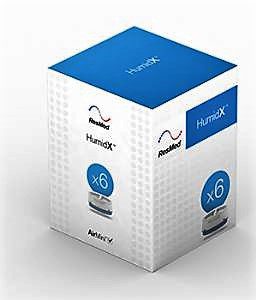
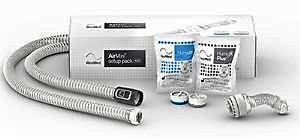
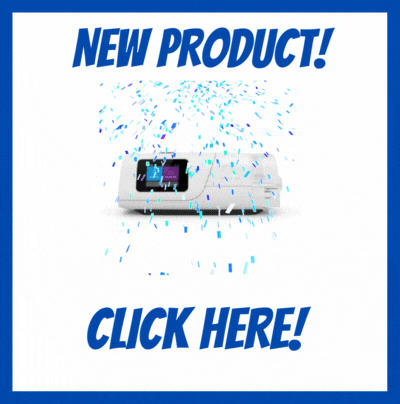

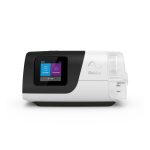
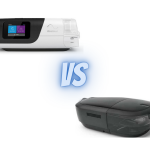
Comments
There are no comments. Be the first to comment!